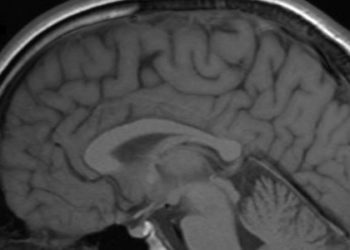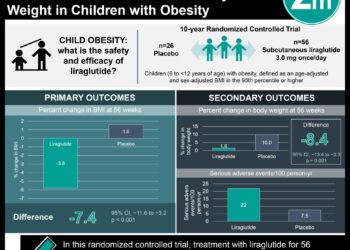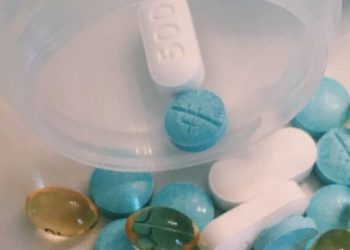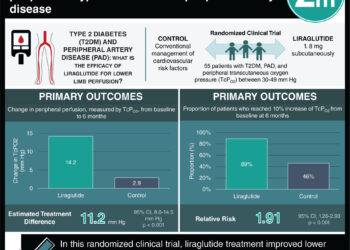2 Minute Medicine Rewind November 15 – November 22, 2015
Possible Subclinical Leaflet Thrombosis in Bioprosthetic Aortic Valves
The aim of this study was to examine the prevalence of reduced leaflet motion in biopresthetic aortic valves and its association with strokes and transient ischemic attacks (TIAs), and the effect of anticoagulation on leaflet motion. A total of 187 patients were used from the PORTICO IDE clinical trial (55 patients) and from two single-center registries (132 patients) to evaluate the incidence of reduced leaflet motion in patients who underwent transcatheter aortic-valve replacement (TAVR). On four-dimensional volume-rendered CT scan, they found reduced leaflet motion in 22 of 55 patients (40%) in the clinical trial and in 17 of 132 patients (13%) in the two registries. In terms of anticoagulation, patients on therapeutic doses of warfarin compared to dual antiplatelet therapy had a decreased incidence of reduced leaflet motion (in the clinical trial, 0% vs. 55%, p = 0.01; in the pooled registries 0% vs. 29%, p = 0.04). Incidence of stroke or TIA was no different between patients with reduced leaflet motion and those with normal leaflet motion in the clinical trial (2 of 22 patients and 0 of 33 patients, respectively; p = 0.16), however in the pooled registries there was a significant difference (3 of 17 patients and 1 of 115 patients, respectively; p=0.007). Therefore in summary, patients with a biopresthetic aortic valve had reduced leaflet motion that resolved on therapeutic warfarin (compared to dual antiplatelet therapy), however its effect on stroke or TIA incidence needs further studies.
Time trends in causes of death after aneurysmal subarachnoid hemorrhage
Aneurysmal subarachnoid hemorrhage (aSAH) continues to carry a high mortality rate despite our best surgical and medical interventions. The purpose of this paper was to compare the causes of in-hospital death after aSAH in two time periods at the same institution. The authors retrieved data on a total of 844 consecutive patients with aSAH admitted less than 3 days after the event in 1999–2002 and 2009–2012. They assessed those that died less than 90 days after the aSAH and the causes of the in-hospital deaths. They compared deaths from initial bleeding, rebleeding or delayed cerebral ischemia using Poisson regression analyses to calculate adjusted risk ratios (aRR). They found that the number of deaths declined from the 1999-2002 time period (a total of 150/381 patients; 39%) compared to the 2009-2012 time period (a total of 140/463; 30%) (aRR 0.74, 95% CI 0.62 to 0.88). Compared with 1999–2002, the aRR for the specific cause of in-hospital death in 2009–2012 was 1.06 (95% CI 0.72 to 1.56) for death from the initial bleeding, 0.47 (95% CI 0.31 to 0.71) for death from rebleeding, and 0.91 (95% CI 0.50 to 1.65) for death from delayed cerebral ischemia. The proportion of rebleeding events declines from 24% to 17% (aRR 0.68, 95% CI 0.52 to 0.90), and the median day of rebleeding decreased from day 5 to day 0, and the median day of aneurysm treatment decreased from day 4 to day 1. Therefore this study provides evidence that one of the important contributors to the reduction of in-hospital deaths from aSAH is the reduction in rebleeding, which is probably a result from earlier treatment. Early occlusion of the aneurysm and reduction in incidence of rebleeding will have important implications in reducing rates of death from aSAH.
In mice models of fatty liver disease, glucagon-like peptide (GLP-1) analogues reduce hepatic steatosis, concentrations of liver enzymes, and insulin resistance, however their efficacy in patients with non-alcoholic steatohepatitis is not well known. The authors conducted a multicenter, double-blinded randomized, placebo-controlled phase 2 trial from August 2010 until May 2013 to assess the safety and efficacy of liraglutide, a long-acting GLP-1 analogue, compared to placebo for patients with clinical evidence of non-alcoholic steatohepatitis to assess for improvement of steatosis. The primary outcome was determined by two independent pathologists who determined resolution of definite non-alcoholic steatohepatitis from baseline with no worsening in fibrosis at end of treatment (48 weeks). The authors found 9 of the 23 patients who received liraglutide (39%) had resolution of definite non-alcoholic steatohepatitis compared with 2 of 22 (9%) patients in the placebo group (RR 4.3; 95% CI 1.0 to 17.7; p=0.019). In addition, 2 of 23 patients (9%) in the liraglutide group vs 8 of 22 patients (36%) in the placebo group had progression of fibrosis (0.2; 95% CI 0.1 to 1.0; p=0.04). In terms of safety, 21 of 23 patients (81%) in the liraglutide group compared to 17 of 22 (65%) in the placebo group suffered GI side effects that included diarrhea, constipation and loss of appetite. Overall, this GLP-like analogue led to histological resolution of non-alcoholic steatohepatitis with similar mild-moderate GI side-effects compared to placebo.
Antimicrobial resistance is threatening our treatment options of simple infections. The authors conducted a cluster randomized complex intervention to improve the quality of prescribing of antibiotics for urinary tract infections (UTI) in primary care general practices in Ireland. They used interactive, multimedia and electronic components with feedback reports. The intervention was conducted over a 3-month period with 3 study arms (A, B and control). The primary outcome measure was proportion of prescriptions for recommended first-line antimicrobials for suspected UTI in intervention arms A and B, relative to the control arm. Compared to the control, intervention arms A and B received a second workshop with information on antimicrobial prescribing guidelines. Intervention arm B received additional evidence than the other intervention arms on the delayed prescribing of antibiotics for suspected UTI. The authors found that groups A and B prescribed antibiotics for UTIs closer to the guidelines compared to controls (adjusted overall OR 2.3, 95% CI 1.7 to 3.2; arm A adjusted OR 2.7, 95% CI 1.8 to 4.1; arm B adjusted OR 2.0, 95% CI 1.3 to 3.0). There was an unintended increase in antimicrobial prescribing in the intervention arms relative to control (arm A adjusted OR 2.2, 95% CI 1.2 to 4.0; arm B adjusted OR 1.4, 95% CI 0.9 to 2.1). At 5-month follow up there was sustained improvements in guideline based prescribing. Overall, the authors found an absolute increase in number of prescriptions for practices in the intervention arms, however patients were twice as likely to receive a prescription for a first-line antimicrobial for their UTI compared to those attending a control practice.
Reperfusion Beyond 6 Hours Reduces Infarct Probability in Moderately Ischemic Brain Tissue
Reperfusion of brain tissue post stroke is time dependent with the benefit of tPA within the first 4.5 hours and endovascular thrombectomy within 6 hours. The authors aimed to examine perfusion changes between 3 and 6 hours and between 6 and 24 hours post stroke and its impact on tissue outcome. In order to assess perfusion changes the authors performed perfusion MRI scans at 3,6 and 24 hours in patients who suffered an acute ischemic stroke, and follow up imaging at 1 month to assess recovery and tissue fate. In order to assess perfusion changes, mean transit time prolongation (MTTp) maps were conducted at 3, 6 and 24 hours and perfusion changes between 3 and 6 hours (ΔMTT3_6 ), and 6 and 24 hours (ΔMTT6_24) were calculated. A 2-step analysis was performed to evaluate the impact of perfusion changes on tissue fate. The authors found that 85% of patients had perfusion improvements during the 3-6 hours post stroke and 81% had perfusion improvements between 6-24 hours. A greater ΔMTT3_6 significantly influenced infarct probability at 1 month across a wide range of baseline perfusion (MTTp 0–15 s). The impact at 1 month of ΔMTT6_24 was restricted to tissue with milder baseline ischemia (MTTp 0–10 s). Therefore, post stroke brain tissue with mild to moderate ischemia can be salvaged by reperfusion even after the 6-hour window and could be targeted by different interventions.
Image: PD
©2015 2 Minute Medicine, Inc. All rights reserved. No works may be reproduced without expressed written consent from 2 Minute Medicine, Inc. Inquire about licensing here. No article should be construed as medical advice and is not intended as such by the authors or by 2 Minute Medicine, Inc.







![Adverse pregnancy outcomes associated with thrombophilias [Classics Series]](https://www.2minutemedicine.com/wp-content/uploads/2015/07/Classics-2-Minute-Medicine-e1436017941513-75x75.png)